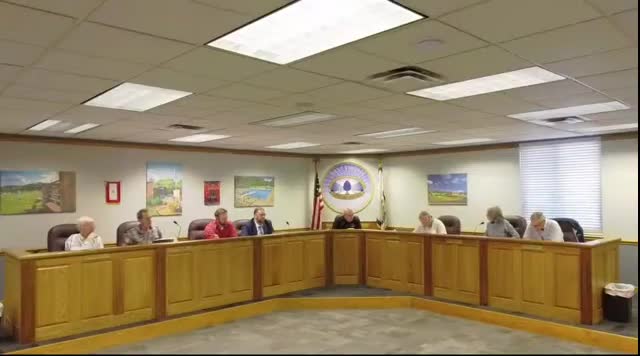Vienna council discusses possible no‑wake zone near new kayak launch at Spencer’s Landing
October 10, 2025 | Vienna, Wood County, West Virginia
This article was created by AI summarizing key points discussed. AI makes mistakes, so for full details and context, please refer to the video of the full meeting. Please report any errors so we can fix them. Report an error »

Vienna Mayor Emerick opened discussion Wednesday on whether to pursue a designated no‑wake zone near the city’s planned ADA‑compliant kayak launch at Spencer’s Landing, but the council made no recommendation and took no formal action.
The council heard that the kayak launch — described in the meeting as the Twelfth Street/Spencer’s Landing launch — is being designed to meet the Americans with Disabilities Act standards and that some residents and council members are concerned about safety when motorized watercraft pass near people entering and exiting small craft.
“ We’re not making any decisions or any recommendations this evening,” Mayor Emerick said, introducing the topic and noting designation of a no‑wake zone would require action by federal engineers and follow-up legislation. Jack Matters, who the council identified as having led the local effort on the project, attended the meeting as the discussion opened.
Speakers split between urging a cautious, signage‑first approach and calls for a formal no‑wake designation. One council member said signage and “caution kayak launch” notices were a reasonable, low‑cost first step. Another, who described long experience on the Ohio River, warned that barges and wind‑driven chop make complete no‑wake rules impractical in some stretches and noted existing legal protections that bar generating wake within 100 feet of docks.
Several residents and long‑time river users said common courtesy and existing law often keep traffic safe, but others said incidents of higher‑speed personal watercraft and small motorized vehicles led them to favor a defined buffer to protect inexperienced paddlers and people with limited mobility.
Speakers also noted the enforcement and jurisdictional complications: the West Virginia Department of Natural Resources (DNR) enforces rules on the river and the U.S. Army Corps of Engineers (the Corps) would be involved if a formal navigational restriction were proposed. Council members asked staff to gather more detail on the permitting and legislative steps required to create a no‑wake zone and to report back; no motion or vote was taken.
The council moved on to a separate agenda item after roughly 15–20 minutes of discussion.
Local context: the topic arose as part of the city’s broader work on Spencer’s Landing, where leaders have planned recreational improvements including the kayak launch and possible multiuse facilities. Council members repeatedly urged an incremental approach — starting with signage and monitoring — but left open the option of future formal action if incidents or data indicate it is needed.
The council heard that the kayak launch — described in the meeting as the Twelfth Street/Spencer’s Landing launch — is being designed to meet the Americans with Disabilities Act standards and that some residents and council members are concerned about safety when motorized watercraft pass near people entering and exiting small craft.
“ We’re not making any decisions or any recommendations this evening,” Mayor Emerick said, introducing the topic and noting designation of a no‑wake zone would require action by federal engineers and follow-up legislation. Jack Matters, who the council identified as having led the local effort on the project, attended the meeting as the discussion opened.
Speakers split between urging a cautious, signage‑first approach and calls for a formal no‑wake designation. One council member said signage and “caution kayak launch” notices were a reasonable, low‑cost first step. Another, who described long experience on the Ohio River, warned that barges and wind‑driven chop make complete no‑wake rules impractical in some stretches and noted existing legal protections that bar generating wake within 100 feet of docks.
Several residents and long‑time river users said common courtesy and existing law often keep traffic safe, but others said incidents of higher‑speed personal watercraft and small motorized vehicles led them to favor a defined buffer to protect inexperienced paddlers and people with limited mobility.
Speakers also noted the enforcement and jurisdictional complications: the West Virginia Department of Natural Resources (DNR) enforces rules on the river and the U.S. Army Corps of Engineers (the Corps) would be involved if a formal navigational restriction were proposed. Council members asked staff to gather more detail on the permitting and legislative steps required to create a no‑wake zone and to report back; no motion or vote was taken.
The council moved on to a separate agenda item after roughly 15–20 minutes of discussion.
Local context: the topic arose as part of the city’s broader work on Spencer’s Landing, where leaders have planned recreational improvements including the kayak launch and possible multiuse facilities. Council members repeatedly urged an incremental approach — starting with signage and monitoring — but left open the option of future formal action if incidents or data indicate it is needed.
View full meeting
This article is based on a recent meeting—watch the full video and explore the complete transcript for deeper insights into the discussion.
View full meeting